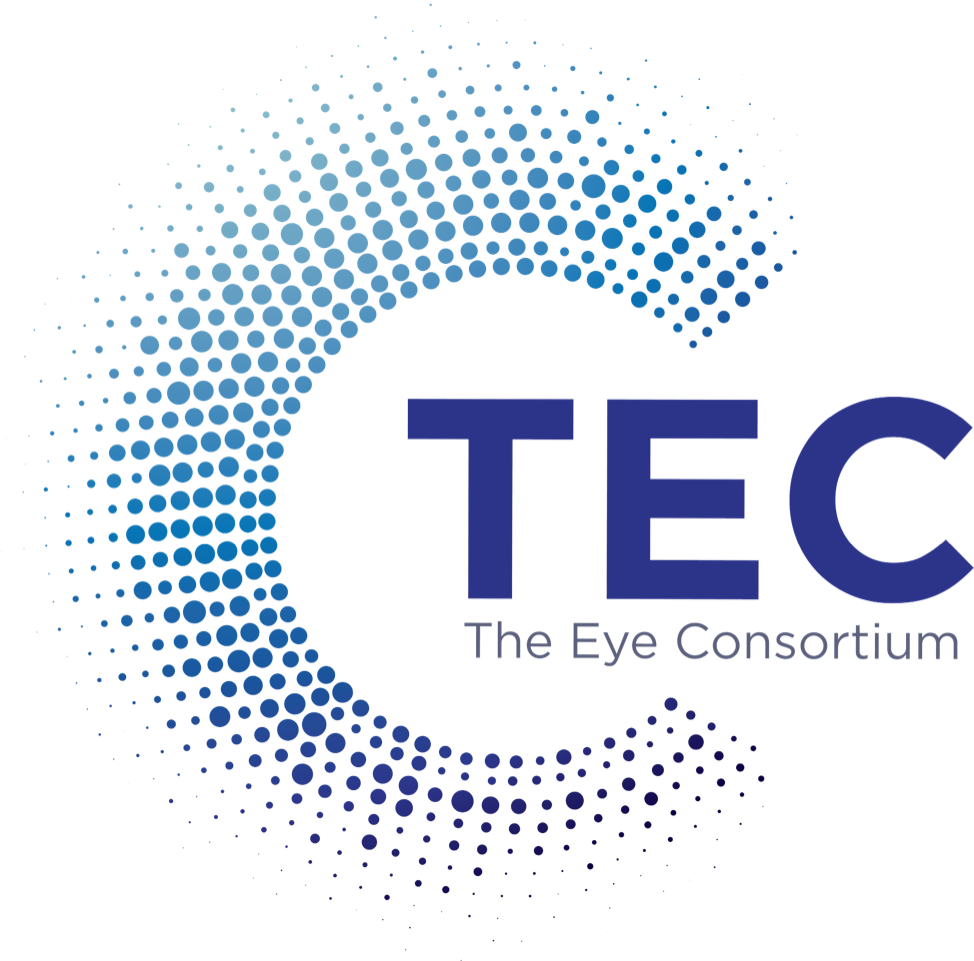
The Largest Virtual Optometric Conference:
77 COPE Approved Credits
4 Live Weekend Events Online
1 Low Price
Featuring ALL NEW LECTURES for 2025!
LIVE Online:
January 25 & 26
April 5 & 6
June 7 & 8 [view schedule]
September 6 & 7 [view schedule]
.. and ON DEMAND through December 1, 2025.
NEW: Meet your ENTIRE 8-Hour DEA Opioid Requirement!
NEW: Meet your ENTIRE NJ Orals Requirement!
NEW: Meet your ENTIRE CA 10-hour Glaucoma Requirement!
REGISTER NOW LOG IN VIEW COURSE LIST
Your
Pay ONE PRICE to access:
- ALL four live events and all on demand content!
- Interactive/Synchronous Lectures including Real-Time Chat Text with Speakers
- The Private CEwire2025 Discussion Forum, where attendees can securely and privately interact with speakers and other conference goers before, during and after the live events and discuss each talk
- Exclusive Vendor Discounts
- On Demand Lectures through December 1st, 2025
... and don't forget to watch the CEwire2025 Livestream Interview Show which runs during the live events, and features eye care industry leaders, lectures, and other special guests at the event!
About CEwire2025
Join
us for the largest online CE event in optometry and see why over
18,000 ODs have chosen to participate over the past
decade!
Earn up to 77 COPE-approved CE credits from leading eye care experts with all-new lectures,
without leaving home.
Use your conference pass to Watch LIVE online
these dates:
January 25-26, 2025
April 5-6, 2025
June 7-8, 2025
September 6-7, 2025
... OR watch ON DEMAND at your own pace and on
your own schedule through December 1, 2025.
Register to receive exclusive discounts from leading
vendors, and tune in to the CEwire2025 Livestream, where we'll chat with
optometric thought leaders and eye care industry executives.
77 Hours of COPE-Approved CE: Watch LIVE or ON DEMAND!
Your registration to CEwire2025 gives you access to
the lectures when they are given LIVE online.
Come to as many or
as few live events as you'd like: your single conference pass gives you access to ALL the live
events.
Each event features all 77 credits, so
if you miss one, you can easily catch what you missed at the next live
event.
Can't make it live? No problem!
Each time we do a live performance, the lectures are recorded and placed
& online for you to view on demand through December 1, 2025.
Watch each archived course as many times as you like. Pause,
rewind, or even watch on your phone in
between patients.
REGISTER NOW
The CEwire2025 Private Forum: 24-7 Interactivity
All registrants will receive immediate access to the CEwire2025 Private Forum, where attendees and speakers can interact with each other round-the-clock. The posts in the forum provide an ongoing conversation about each lecture, throughout the year and beyond.The forum provides you with a private and secure space where you can:
- Ask questions before, during, and after the event
- Interact with & get to know your fellow attendees
- Peruse vendors discounts, and discuss their products and services with experts from each company
No other conference gives you this sort of long-term access to information.
REGISTER NOW
CEwire2025 Livestream!
 As in prior years, during the live weekends we will broadcast from
CEwire HQ.
As in prior years, during the live weekends we will broadcast from
CEwire HQ. CEwire staff will give participants the latest updates on the conference in real time, including current discounts being offered at the show, and interviews with leaders in eye care.
Come join the fun!
REGISTER NOW
Taking CE Has Never Been Easier
Receiving your COPE credits is incredibly simple:
2. Login and watch a live performance online! You can interact with the speakers via text chat at the live shows!
...OR you can watch lectures on demand, starting after the conclusion of the first live show, January 27 through December 1, 2025
3. If watching on one of the "LIVE" days, no quiz is required to gain credits. Simply watch an entire course, and it will be added to your transcript as a "Virtual Synchronous" credit. If watching on demand, complete a short quiz after each hour of class (take the quizzes as many times as you need to in order to pass). When you complete an on demand class, it is credited by ARBO as an "Asynchronous" credit.
4. We transmit your credits to ARBO automatically, using your ARBO OE Tracker number that you gave when you registered.
We also provide you with digital certificates after you complete each course, which are permanently archived in the ODwire.org Transcript Center should you need to look them up or download them in the future.
CEwire2025 Course List
- All courses (77 hours) will be presented online at each event as ONLINE INTERACTIVE/SYNCHRONOUS COPE credits.
- The first live event is on January 25 & 26, 2025. [VIEW SCHEDULE]
- All courses are also available ON DEMAND through December 1, 2025 as ONLINE ENDURING/ASYNCHRONOUS COPE credits.
- Your CEwire2025 Season Pass will work at ALL LIVE and On Demand sessions - there is no need to re-register or pay again if you've already signed up. One pass gives you full access!
| Course Title | Hours | Sync ID | Async ID | speaker names | keywords | category |
|---|---|---|---|---|---|---|
| AI IN OPTOMETRY: THE PRESENT AND THE FUTURE 2.0
Steve Silberberg, OD This course offers an in-depth examination of how artificial intelligence is transforming the field of optometry and ophthalmology. Through detailed discussions on AI technologies such as machine learning and deep learning, attendees will learn about their applications in diagnosing and managing eye conditions, including diabetic retinopathy, glaucoma, age-related macular degeneration, and more. The course also delves into AI's impact on patient care, practice management, and surgical assistance, while addressing important challenges like data privacy and algorithmic bias. With a focus on current and emerging technologies, this course provides valuable insights into the future of AI in eye care. |
1 | 94991-GO | 94992-GO | Silberberg | AI,Artificial Intelligence, diagnostics, | GO |
| DETECTING SYSTEMIC CONDITIONS USING OCULAR IMAGES
Murray Fingeret, OD, FAAO Systemic diseases are usually diagnosed during a medical examination when physical tests or blood work reveal an abnormality. Retinal photography is useful to detect ocular and systemic conditions but its role as a systemic disease screening tool is new. Artificial intelligence allows evaluation which could prompt referral. This course discusses how optometry may be involved in detecting systemic conditions. |
1 | 94993-GO | 94994-GO | Fingeret | systemic,images,retina | GO |
| GLAUCOMA JOURNAL CLUB
Murray Fingeret, OD, FAAO Clinicians struggle to keep track of new, important developments. This course will present recently published papers that have changed or may change clinical practice. Papers pertaining to diagnosis, therapy, and lifestyle will be included. The research design, clinical relevance along with the paper’s strengths and weaknesses will be discussed. | 1 | 94995-GL | 94996-GL | Fingeret | Glaucoma,systemic,research | GL |
| MIOTIC EYE DROPS: TO PRESBYOPIA AND BEYOND!
S. Barry Eiden, OD, FAAO Miotics have been used in ophthalmic practice for many decades, primarily for the treatment of glaucoma. Miosis induced by these agents can have a profound impact on visual function by extending the depth of field and depth of focus. Commonly referred to as “small aperture optics” or “pinhole optics”, this effect can be applied to address multiple visual challenges. A number of ophthalmic pharmaceutical companies have developed topical miotic agents primarily to address presbyopia, however other applications can be considered as well including mydriasis reversal, reduction of high order aberrations or minimization of residual refractive errors. This course will review concepts of small aperture optics and how topical miotic eye drops can be utilized to address presbyopia and other applications. A review of current agents, either approved or in development along with their clinical performance based on published clinical trial data will be presented. Clinical applications will also be reviewed. | 1 | 94998-PH | 94999-PH | Eiden | miotics,presbyopia,drops | PH |
| OCT ANGIOGRAPHY IN CLINICAL PRACTICE
Julie Rodman, OD, MSc, FAAO Optical Coherence Tomography Angiography is a new method of analysis based on high-resolution imaging techniques whereby the retinal and choroidal circulation can be visualized simultaneously without injection. This course will review this technology as well as provide pertinent clinical examples. The participant will become familiar with standard OCTA terminology in order to accurately assess OCTA features. | 1 | 95000-TD | 95001-TD | Rodman | OCT,OCTA | TD |
| DISEASES OF THE VITREOMACULAR INTERFACE
Julie Rodman, OD, MSc, FAAO This course will address anomalies of the vitreoretinal interface including normal posterior vitreous detachment, vitreomacular traction, and macular hole. The use of Optical Coherence Tomography in the evaluation of these entities will be discussed. | 1 | 95002-TD | 95003-TD | Rodman | OCT,OCTA,vitreomacula,retina | TD |
| CLINICAL IMPLICATIONS OF GLAUCOMATOUS DISC HEMORRHAGES
Austin R. Lifferth OD, FAAO Not all disc hemorrhages are glaucomatous, but when they are, they may literally be red flags regarding the patient's present diagnosis and their future prognosis. Where do we look for such red flags, when are they most likely to occur, which patients are most likely to have them - and what should we do (if anything?) when we see them? This discussion reviews relevant research to try to answer such questions to better determine the clinical implications of glaucomatous disc hemorrhages. | 1 | 95004-GL | 95005-GL | Lifferth | glaucoma,hemorrhage | GL |
| ORAL PHARMACEUTICALS IN OCULAR DISEASE
Nate Lighthizer, OD, FAAO Oral medications such as antibiotics, antivirals, among others, are used for a variety of ocular conditions from the anterior segment to the posterior segment. This interactive 2 hour lecture will review the ocular disease conditions that often require oral pharmaceutical treatment, and will review the indications, contraindications and treatment protocols for the most common oral medications used in eyecare. | 2 | 95006-PH | 95007-PH | Lighthizer | oral,pharmaceuticals | PH |
| RIGHT DIAGNOSIS, WRONG DIAGNOSIS: YOU MAKE THE CALL
Nate Lighthizer, OD, FAAO Failure to diagnose is one of the most common reasons why doctor get sued. This interactive 1 hour lecture will be a grand rounds format of cases that went to litigation involving an eye doctor. Conditions will vary from anterior segment to posterior segment conditions. Was the diagnosis or treatment right? Was it Wrong? You make the Call! | 1 | 95008-EJ | 95010-EJ | Lighthizer | law,legal,lawsuit | EJ |
| OCT - FUNDAMENTALS TO ADVANCED CONCEPTS
Graham Lakkis, BScOptom, GradCertOcTher, FACO OCT instruments are essential for the diagnosis and management of eye disease, particularly in glaucoma. However there is potential for incorrect interpretation if practitoners do not fully understand the fundamentals of the instrument and how it collects and analyses data. Clinical studies show that up to 25% of OCT scans are false positives. Another key factor in glaucoma management is accurate progression analysis, to determine if changes of a few microns are a sign of clinical deterioration. This presentation will describe strategies to limit false positives, and discuss the OCT settings required for the earliest detectitionon of change over time. | 1 | 95011-GL | 95012-GL | Lakkis | glaucoma,OCT | GL |
| POSTERIOR SEGMENT MANIFESTATIONS OF SYSTEMIC DISEASE
Carolyn Majcher, OD, FAAO Using a fast-paced, case presentation format this course will cover some common and some not-so-common posterior segment manifestations of systemic disease. 1. Recognize clinical posterior segment ocular presentations suggestive of underlying systemic disease 2. Become familiar with systemic infectious and inflammatory conditions that can cause panuveitis 3. Become familiar with the systemic workup and embolic source evaluation that should be perform in cases of acute central retinal artery evaluation 4. Strengthen diagnostic reasoning skills and the ability to apply basic and clinical knowledge in order to develop appropriate diagnostic and management plans | 1 | 95013-TD | 95014-TD | Majcher | posterior segment,panuveitis,systemic | TD |
| EYE-1-1: OCULAR EMERGENCY AND TRAUMA GRAND ROUNDS
Carolyn Majcher, OD, FAAO Utilizing a grand rounds presentation format, cases of trauma and ocular disease presenting to the emergency department, most of which required emergent treatment to prevent blindness and/or serious systemic consequences, will be discussed. | 1 | 95015-TD | 95016-TD | Majcher | trauma,ER,emergency | TD |
| OCULAR ADVERSE EFFECTS OF THERAPEUTIC BIOLOGICS
Susan Resnick, OD, FAAO, FSLS Biologics are an ever expanding category of pharmaceutical agents used to treat a wide range of systemic and ocular conditions. This course will introduce the primary care optometrist to the pharmacology of biologics, their clinical indications, and the potential ocular side effects of these medications. | 1 | 95017-PH | 95018-PH | Resnick | biologics,pharmaceuticals,systemic | PH |
| DRY EYE DIAGNOSTICS 101
Cory J. Lappin, OD, FAAO This course will provide a systematic review of dry eye diagnostic testing including meibography, lipid layer interferometry, osmolarity, in vivo confocal microscopy, corneal nerve assessment, and many others. Implementation of diagnostics, interpretation of testing results, and clinical pearls will also be discussed. | 1 | 95019-TD | 95020-TD | Lappin | dry eye,introduction | TD |
| GLAUCOMA DIAGNOSIS FROM 101 TO 901
Mitchel J. Ibach, OD, FAAO This lecture will journey through glaucoma diagnosis from basic principles into the contemporary approaches and newer technologies. The lecture will feature a case-based approach, emphasizing the advancements in intraocular pressure (IOP) measurements, optical coherence tomography (OCT), visual field testing, and corneal hysteresis. A focus will be on piecing together the diagnostic puzzle in glaucoma from a glaucoma suspect to a patient with severe disease. | 1 | 95021-GL | 95022-GL | Ibach | glaucoma,OCT,VF,hysteresis | GL |
| PAIN MANAGEMENT IN OPTOMETRIC PRACTICE: 2025 UPDATE
Steven Sorkin, OD This course will review the contemporary state of the opioid epidemic in the United States and its effect on society in general. Specific impacts on optometric practice will be discussed. The roles of topical and oral pain management in eye care will be reviewed and new approaches to the management of ocular pain will be highlighted during this course. Public health ramifications of addiction and proposed government intervention/ possible remedies will also be covered. | 1 | 95090-PH | 95091-PH | Sorkin | pharmacology,pain,narcotics,dea | PH |
| RECURRENT CORNEAL EROSIONS: NOT AGAIN!
Steven Sorkin, OD Recurrent Corneal Erosions are one of the most commonly encountered conditions seen in optometric practice. This course will discuss the etiology, medical and surgical treatments of this corneal condition. New research and treatment modalities will also be discussed. | 1 | 95023-TD | 95024-TD | Sorkin | erosions,cornea | TD |
| NEURO-OPHTHALMOLOGIC URGENCIES AND EMERGENCIES
Jacqueline Theis, OD, FAAO, FNAP This course covers the diagnosis and management of neuro-ophthalmologic emergencies, including giant cell arteritis, Horner’s syndrome, aneurysms, myasthenia gravis, and intracranial lesions such as cavernous sinus thrombosis and pituitary apoplexy, equipping optometrists to handle urgent cases. | 1 | 95025-NO | 95026-NO | Theis | emergency,emergencies,neuroopthalmology,arteritis,aneurysm | NO |
| PAIN MANAGEMENT: NARCOTIC ANALGESICS AND BEYOND!
Joseph Pizzimenti, OD, FAAO Pain is a feeling triggered in the nervous system. It may be sharp or dull. Pain may come and go, or it may be constant. This course presents the pathobiology, causes, proper diagnosis, and responsible management of ocular and periocular pain. While the opioid class of analgesics remains an important component of mitigation of pain, our discussion goes beyond narcotic analgesics to discuss a global approach to pain management. | 1 | 95028-PH | 95029-PH | Pizzimenti | narcotics,dea,pain | PH |
| PROTECT YOUR EYES THE MEDITERRANEAN WAY
Joseph Pizzimenti, OD, FAAO Various aspects of a Mediterranean diet and lifestyle have been shown to correlate with healthy aging. Several ocular benefits have been associated with this lifestyle pattern, owing to a reduction in oxidative stress and inflammation. From AMD prevention/management to neuroprotection in glaucoma, this course reviews the latest research and presents a rationale for nutritional therapy and support. | 1 | 95031-GO | 95032-GO | Pizzimenti | aging,mediterranean,nutrition | GO |
| LOOKING AT THE LAYER: ADVANCED OCT ANALYSIS
Shaina Sullivan, OD Optical coherence tomography (OCT) allows for detailed imaging of the retina, including visualization of the 10 retinal layers. This course will describe how to distinguish retinal pathology by identifying which layer of the retina is affected. | 1 | 95033-TD | 95034-TD | Sullivan | OCT,retina,pathology | TD |
| MAKING SENSE OF GLAUCOMA ACRONYM SOUP: ZAP, LIGHT AND OHTS
Shaina Sullivan, OD This course will discuss three of the most recent studies in glaucoma management and how the research can be applied to clinical decision making. The course will cover angle-closure glaucoma, primary open-angle glaucoma, and ocular hypertension/glaucoma suspects. | 1 | 95035-GL | 95036-GL | Sullivan | glaucoma, ocular hypertension | GL |
| DRY EYE INNOVATIONS
Jessilin Quint OD, MBA, MS, FAAO Dry eye is a multifactorial disease with numerous diagnostic and treatment options available. This lecture will discuss modern diagnostic and treatment strategies for ocular surface disease. Case examples will emphasize clinically relevant information for the modern-day practitioner to appropriately address all multifactorial etiologies of dry eye disease and offer effective treatment options. Treatment options covered will include pharmacologic agents, amniotic membranes, intense pulsed light, radiofrequency, photobiomodulation, eyelid retractor irrigation, and meibomian gland expression technologies. | 1 | 95037-TD | 95038-TD | Quint | dry eye,ocular surface | TD |
| HOW TO IMPRESS YOUR PATIENT AND THEIR PRIMARY CARE DOCTOR
Mark Friedberg, MD There are a lot of retinal and optic nerve problems that can be due to systemic medical disorders, disorders that may be occult and unbeknownst to the patient and their primary care doctor. This course will help the attendee distinguish these problems from similar problems, guide them as to when referral is or is not needed, and help them advise the medical doctor as to what needs to be done. It will also enhance the audience's ability to recognize side effects of some common systemic medications so that the patient and primary care doctor can be alerted to the situation. Over 100 slides in 100 minutes! | 2 | 95039-TD | 95040-TD | Friedberg | systemic disease,referral | TD |
| GAME CHANGERS: ELEVATING SPORTS VISION FOR OPTIMAL PERFORMANCE
Jennifer Stewart, OD In this course, we will explore the critical role vision plays in athletic success. This course delves into the latest techniques for assessing and enhancing visual skills specific to sports, including depth perception, visual processing speed, and tracking abilities. Participants will learn: • How to conduct comprehensive sports vision evaluations, enabling them to tailor interventions that support athletes in achieving their peak performance. • The latest techniques for assessing and enhancing visual skills specific to sports, including depth perception, visual processing speed, and tracking abilities. • How to become a key contributor to their athletes' success, turning insights into actionable results on and off the field. • This course will also cover innovative solutions such as specialized eyewear, training programs, and the integration of technology to track visual performance over time. | 1 | 95041-FV | 95042-FV | Stewart | sports vision | FV |
| THE HIGH-RISK CATARACT: HOW TO IDENTIFY AND MANAGE CHALLENGING CASES
Oliver C. Kuhn-Wilken, OD A guide to 10 clinical situations that place the patient at a higher risk of complications from cataract surgery, including a higher risk for endophthalmitis, mature cataracts, pseudoexfoliation, a history of ocular trauma, a history of herpetic eye disease, intraoperative floppy iris syndrome, Fuchs' endothelial dystrophy, a higher risk for cystoid macular edema, a history of uveitis, and a higher risk for retinal detachment. | 1 | 95045-PO | 95046-PO | Wilken | Cataract, Peri-Operative,cataracts | PO |
| NEURO-OPHTHALMIC DISEASE RULES THAT YOU (AND YOUR PATIENT!) CAN LIVE BY
Joseph Sowka, OD, FAAO This course will review in a case-based format the pertinent anatomy as well as present several fundamental principles and rules required to diagnose and manage patients with neuro-ophthalmic disease. This course will discuss optic neuropathies, compressive lesions, Horner’s syndrome, cancers, aneurysms, and cranial nerve palsies in a grand rounds format designed to engender clinical discussion. | 2 | 95047-NO | 95048-NO | Sowka | neuro,neuro-opthalmology,optic nerve,horner,palsies | NO |
| PAIN PAIN GO AWAY!
Mile Brujic, OD, FAAO As optometry’s scope of practice continues to evolve, so does our responsibility to provide pain management. This course will provide the strategies needed to confidently provide appropriate pain management strategies for those in our care that require it. 1) Understand the ocular pain pathway along with the inflammatory cascade 2) Discuss topical medical strategies to alleviate pain 3) Discuss oral narcotics and various prescribing schedules | 1 | 95050-PH | 95051-PH | Brujic | pain,narcotics,DEA | PH |
| ANTERIOR SEGMENT PHARMACEUTICAL UPDATE
Mile Brujic, OD, FAAO Anterior segment disease is becoming increasingly important to manage in the contemporary optometric practice. This course will review new treatments to help us manage the anterior segment. 1) Understand new diagnostics 2) Discuss new pharmaceuticals to manage anterior segment conditions 3) Understand topical treatments to manage refractive conditions | 1 | 95052-PH | 95053-PH | Brujic | anterior segment,pharmaceuticals | PH |
| SPORTS RELATED CONCUSSION: DIAGNOSIS AND MANAGEMENT
Vittorio Mena OD, MS Proper vision and awareness is crucial for sports performance. This course will discuss sports related traumatic brain injuries and the visual problems to expect in the examination room as well as the diagnostic tests that are out there for concussions. | 1 | 95056-FV | 95057-FV | Mena | sports, concussion | FV |
| RISK ASSESSMENT IN GLAUCOMA: STRATEGIES FOR EARLY DETECTION AND PREVENTION
Sarah MacIver BSc, OD, FAAO This lecture will take a case-based approach to emphasize the importance of risk stratification in managing primary open-angle glaucoma (POAG). Accurate risk assessment is vital for identifying patients at the greatest risk of progressing from ocular hypertension (OHTN) or early-stage glaucoma to advanced disease. The session will cover key individual risk factors, including family history, age, ethnicity, intraocular pressure (IOP), central corneal thickness, and optic nerve head appearance, to help clinicians personalize monitoring and treatment plans. Risk stratification is essential in deciding when to start treatment and determining follow-up frequency, ensuring early detection and timely intervention. Additionally, the lecture will explore how systemic diseases and lifestyle factors, such as sleep apnea, exercise, diet, and stress, influence glaucoma progression, providing practical, evidence-based strategies for clinicians to guide patients in making lifestyle modifications that may reduce risk or slow disease progression. | 1 | 95059-GL | 95061-GL | MacIver | glaucoma,risk,POAG,OHTN | GL |
| CONTEMPORARY MANAGEMENT OF PRIMARY OPEN ANGLE GLAUCOMA
Sarah MacIver BSc, OD, FAAO This lecture will explore modern challenges in managing primary open-angle glaucoma (POAG) using a case-based approach. It will highlight contemporary medical therapies, including new medications like selective Rho kinase inhibitors and prostaglandin analogs, which offer improved efficacy and fewer side effects. Additionally, it will address the impact of preservatives such as benzalkonium chloride (BAK) on ocular surface disease (OSD) and provide strategies to reduce these effects. The session will also cover interventional options, such as laser treatments and minimally invasive glaucoma surgeries (MIGS), to optimize patient outcomes. | 1 | 95063-GL | 95065-GL | MacIver | glaucoma,risk,POAG,OHTN, MIGS | GL |
| BEYOND DRY EYE: MASTERING THE DIAGNOSIS OF OCULAR SURFACE DISORDERS
Crystal Brimer, OD, FAAO Often in a busy primary eyecare office, the squeaky wheel gets the grease, and the grease is in the form of a prescription dry eye drop. Yet some patients improve, while others do not. Get ready to do a deep dive into other causes of patient symptoms besides "dry eyes," and how to use that differentiation to get better outcomes. Course Objectives: • Better differentiate between the underlying causes of OSD • Learn what to look for when specific symptoms present • Obtain superior outcomes by addressing the root cause of the issue • Review diagnostic techniques • Elaborate on treatment courses | 1 | 95066-TD | 95067-TD | Brimer | dry eye, osd, | TD |
| TACKLING DIFFICULT GLAUCOMA CASES
Anupam Laul, OD, FAAO, DIPL ABO and Richard J. Madonna, OD, FAAO Through actual case presentations, the presenters discuss the management of challenging glaucoma cases. These cases have multiple management options, each of which will be considered. Progressive normal tension glaucoma, disc hemorrhage, angle closure, secondary open-angle glaucoma, use of nutraceuticals, and polypharmacy are covered. | 2 | 95073-GL | 95074-GL | Laul | Glaucoma,cases | GL |
| THE ECP ECOSYSTEM: ECONOMIC INFLUENCES ON PRIVATE PRACTICE
Steve Alexander Discussing the last 25 years of tremendous changes, technological breakthroughs, generational shifts in mindsets and attitudes in eye care and the economy. We discuss why many institutions within eyecare have not kept up with those specific changes, and how we might adjust our behavior based on that recognition. Course Objectives 1. To understand how the economics of eye care has changed over 25 years 2. To identify how much impact external and internal problems have on each practice 3. To develop the ability to create meaningful and repeatable change in your practice 4. To review the relationship between your practice and managed vision care partners | 1 | 95083-PM | 95084-PM | Alexander | economics,private practice,change management | PM |
| PICK ONE, WHICH ONE? MYOPIA TREATMENTS AND IMPLEMENTATION INTO PRACTICE
Brianna Rhue, OD, FAAO, FSLS This course will walk the optometrist through the different FDA approved myopia management treatments available today and those on the horizon for approval. We will then discuss how to select the best treatment possible for the child and family on a case by case basis, based on studies, and what should be considered when selecting a treatment. | 1 | 95085-GO | 95086-GO | Rhue | myopia, myopia management | GO |
| 3 PROVEN HABITS OF TOP SELLING OPTICALS
Kayla Ashlee Got inventory data, but have no idea what to do with it? Take a look at 3 proven stats to reference in your optical's data to optimize frame retailing. Stagnant inventory is limiting your profitability. Learn to rethink your structure and manage your frame boards to make your investment thrive. | 1 | 95088-PM | 95089-PM | Ashlee | optical, frames, inventory, practice management | PM |
| THE OPTOMETRIST ROLE IN REDUCING CARDIOMETABOLIC DISEASE
John Nolan, PhD The objectives of this course are to present the newest information on the link between macular (eye) carotenoids and oxidative stress, and how these nutrients can reduce systemic inflammation, with positive implications eye and brain health, and cardiometabolic disease. This course will explain the rationale whereby carotenoids not only enhance vision via its antioxidant and optical properties, but significantly reduce oxidative LDL down the pathway of inflammation. | 1 | 95092-PB | 95093-PB | Nolan | nutrition,ocular disease,cardiometabolic disease | PB |
| GLAUCOMA PROTOCOLS: DIAGNOSIS, TREATMENT AND MANAGEMENT STRATEGIES
Pinakin Davey, OD, PhD, FAAO This lecture will discuss evidence-based protocols in diagnosing, treating, and managing glaucoma. The lecture will discuss open-angle glaucoma, common secondary glaucoma, and the rare but important acute angle closure. These protocols are based in evidence-based and will be directly applicable to clinical situations. | 1 | 95094-GL | 95095-GL | Davey | glaucoma | GL |
| NUTRITION FOR THE EYES, BODY AND THE BRAIN: ITS IMPORTANCE PRE-BIRTH TO THE GOLDEN YEARS
Pinakin Davey, OD, PhD, FAAO This lecture will discuss the current evidence of the role of maternal nutrition, particularly the importance of carotenoids in visual and academic performance and behavior during the developmental years. It will also discuss nutritional needs in the aging population and their role in preventing and managing ocular diseases. | 1 | 95096-PH | 95097-PH | Davey | nutrition | PH |
| 360 DEGREE DIABETIC EYE CARE
Roya Attar, OD, MBA, DHA, FAAO This course expands beyond diabetic retinopathy and covers the full spectrum of ocular complications in diabetes. It emphasizes the importance of comprehensive eye exams in diabetic patients for early detection and management of potential complications. | 1 | 95098-SD | 95099-SD | Attar | diabetes,retinopathy | SD |
| OPTIC DISCS: PAPILLEDEMA
Lorcan Butler, BSc (Hons), MCOptom Papilledema can be a very challenging condition to detect especially in its early stages. This presentation will go through signs & symptoms utilizing multi-modal imaging techniques with guides to referrals and urgency of referrals. Best Practice techniques and clinical pearls will be given during the presentation. | 1 | 95187-NO | 95188-NO | Butler | papilledema | NO |
| TOP TEN PEDIATRIC MEDICATIONS AND THEIR OCULAR SIDE EFFECTS
Viola Kanevsky, OD Your pediatric patients often take oral medications. Children may not report symptoms at all or may report them differently than adults. This course will help the primary care optometrist anticipate, recognize, and address the side effects of the most commonly prescribed pediatric drugs. | 1 | 95100-PH | 95101-PH | Kanevsky | pediatrics,children,pharmacology,side effects, medicine | PH |
| BEYOND THE TYPICAL: ORAL AGENTS FOR DIABETIC RETINOPATHY
A. Paul Chous, MA, OD, FAAO Diabetic retinal disease remains a leading cause of severe vision loss despite recent advances in imaging and functional testing that identify this group of disorders at their earliest stage. This course focuses on several low-cost, readily available and under-utilized oral therapies that afford retinal protection in patients with diabetes with specific recommendations for optometrists and ophthalmologists. | 1 | 95118-PH | 95119-PH | Chous | diabetes, diabetic retinopathy, pharmacology, oral | PH |
| LIES AND DAMN LIES ABOUT DIABETES AND DIABETIC RETINOPATHY
A. Paul Chous, MA, OD, FAAO This course will consider a number of half-truths and downright falsehoods about diabetes and diabetic retinopathy, with an aim to better prepare clinicians to manage their patients with diabetes. Course Objectives: 1. Attendees will be able to describe several fallacies regarding risk factors for diabetes 2. Attendees will be able to describe several fallacies regarding risk factors for diabetic retinopathy 3. Attendees will be able to describe several fallacies regarding identification, grading and treatment of diabetic retinal disease | 1 | 95102-SD | 95103-SD | Chous | diabetes, diabetic retinopathy, pharmacology, oral | SD |
| SEEING THROUGH THE PAIN: NAVIGATING NARCOTIC USE IN OPTOMETRY
Tamara Petrosyan, OD This lecture will delve into effective pain management techniques for the primary care optometrist. We will discuss practical approaches to alleviate pain - balancing OTC, non-narcotic, and narcotic use. Objectives: 1. To understand the difference between opioid and non-opioid analgesics 2. To understand the proper considerations and best practices when prescribing opioid analgesics 3. To review best practices when managing ocular pain in optometric practice | 1 | 95108-PH | 95109-PH | Petrosyan | pharmacology, narcotics, opioids, DEA | PH |
| REFLEXES GONE WILD: HOW PRIMITIVE REFLEXES CAN PLAY TRICKS ON YOUR EYES
Tamara Petrosyan, OD Curious why some people's eyes seem to have a mind of their own? This lecture explores the wild world of primitive reflexes and their surprising effects on visual performance. We will explore how these reflexes can negatively impact visual skills and academic performance if they stick around after they are supposed to be gone. Objectives: ● Understanding Primitive Reflexes and Their Development ● Identifying common Retained Primitive Reflexes ● Understanding Developmental and Clinical Implications for retained primitive reflexes | 1 | 95110-FV | 95111-FV | Petrosyan | reflexes, primitive reflexes | FV |
| BEYOND PAIN RELIEF: THE OPIOID EPIDEMIC AND EYE CARE
Thuy-Lan Nguyen OD, FAAO, FSLS Opioid drugs act on the brain to provide pain relief. They include prescription medications such as oxycodone, hydrocodone, codeine and morphine as well as illicit drugs such as heroine and fentanyl. At the conclusion of this lecture, attendees will understand the opioid epidemic as well as ocular and systemic signs of opioid use disorder. | 2 | 95112-PB | 95113-PB | Nguyen | opioids,narcotics,DEA,pain | PB |
| A LOOK TO THE DARKSIDE: RETINAL CONUNDRUMS
Mohammad R. Rafieetary, OD, FAAO Patients with several retinal findings with or without and associated symptoms present to optometrists. This case-based lecture exhibits some of these presentations. Diagnosis, differential and management of these conditions are also reviewed. Objectives: 1) Discuss some basic principles of clinical diagnosis 2) Demonstrate the value of retinal diagnostic technologies 3) Review management of the cases and conditions presented | 1 | 95114-TD | 95115-TD | Rafieetary | retina, diagnosis, management | TD |
| OCULAR TRAUMA FORM ER TO OFFICE
Salar Rafieetary, MD Ocular trauma is very prevalent and ranges from mild and self-resolving to severe and vision threatening. This course will cover the pertinent historical and exam elements need to best triage ocular trauma cases that present to your office. | 1 | 95116-TD | 95117-TD | Rafieetary | trauma, emergency, ER | TD |
| BRIDGING OD AND MD PERSPECTIVES IN RETINAL CARE: A CASE-BASED APPROACH
Mohammad R. Rafieetary, OD, FAAO & Salar Rafieetary, MD & Roya Attar, OD, MBA, DHA, FAAO Collaboration and communication between optometrists and retinal specialist (RS) are extremely important in management of vitreoretinal disease. This lecture OD/OMD collaborative case based lecture is to demonstrate the intricacies of this relationship. | 1 | 95120-TD | 95121-TD | Rafieetary | collaboration, collaborative care, retina | TD |
| 10 DRY EYE TREATMENT TOOLS THAT DON'T BREAK THE BANK
Ada Noh, OD & Janelle Davison, OD Dry eye disease (DED) is a common yet challenging condition impacting millions of Americans. Optometrists are seeking to offer effective solutions without straining their patients' budgets. The course focuses on 10 dry eye treatment tools that won't break the bank, equipping you with the knowledge to deliver relief through approachable and budget-friendly options. | 1 | 95122-TD | 95123-TD | Noh | Dry eye, OSD, ocular surface disease | TD |
| COMPLEX ANTERIOR SEGMENT CASES: DIAGNOSIS AND MANAGEMENT
Richard Witlin, MD, FACS Clinicians often encounter challenging situations in the care of their patients. They have to make complex decisions that determines the patient's clinical outcomes when dealing with patients that have complex anterior segment diseases. Using actual clinical examples and an interactive format that requires course participants to make clinical choices, various topics will be covered. These include: 1) Laser Vision Correction and Herpes 2) Decision making in the treatment of hyperopia 3) Exfoliation Syndrome: Diagnostic Pearls, Cataract Surgical Complications and Post-op Management Strategies 4) Cataracts and uveitis-Diagnostic Work-up, Pre- and Post-Op Management 5) Astigmatism Management and Surgical Options and Treatment 6) Diagnosis and Management of Posterior Polar Cataracts 7) New IOL options, such as Light-Adjustable: Pros and Cons and When does your patient need them 8) Femto-laser cataract surgery: Pros and Cons and When it really matters. | 1 | 95124-PO | 95125-PO | Witlin | Anterior Segment | PO |
| PRESCRIBING OPIOIDS IN 2025
Benjamin P. Casella, OD Opioids have and will continue to have their place in primary eye care. Prescribing these addictive medications comes with great responsibility on the part of the prescriber. This course will update the clinician on proper prescribing protocol for narcotic analgesic medications, including common indications, contraindications, dosage amounts, and pregnancy considerations. There will be case presentations for audience participation interspersed within. | 2 | 95223-PH | 95328-PH | Casella | opioids,narcotics,DEA,pain | PH |
| GLAUCOMA: GOING BEYOND IOP
Benjamin P. Casella, OD The glaucomas are a multifactorial family of optic neuropathies. The traditional approach has been and still is the lowering of IOP. To that end, no therapeutic approach has proven worthy of coming before current treatment of IOP. There are, however, therapeutic approaches coming to light in glaucoma labs and in the world's literature which highlight the need for and existence of glaucoma treatment modalities which go beyond just lowering IOP. Several of these will be discussed in this course. | 2 | 95224-GL | 95329-GL | Casella | glaucoma | GL |
| JUST ANOTHER DAY: PRACTICAL ANTERIOR SEGMENT CASES FOR PRACTICAL CLINICIANS
Marc R. Bloomenstein, OD, FAAO This course is designed to present a variety of anterior segment disorders that present in the optometric office. Practical and relevant to today's practicing OD. Treatment options of these disorders as well as new therapeutic options will be discussed. | 1 | 95126-TD | 95127-TD | Bloomenstein | anterior segment | TD |
| OPTIMIZING THE OCULAR SURFACE IN THE PREOPERATIVE PATIENT
Kristen Brown, OD, FAAO, Dipl CCLRT Refractive surgery is any surgery that corrects or reduces refractive error. Dry Eye impacts surgical outcomes when not addressed preoperatively - even in asymptomatic patients. The need for medical eye care is increasing and optometry is ideally suited to step up and care for dry eye in the preoperative patient. Course Objectives: 1. To describe the impact of dry eye on preoperative measurements for cataract and laser refractive surgery 2. To motivate optometrists to screen for and manage DE/OSD all preoperative patients 3. To describe the minimum DE/OSD testing and treatment options we can offer to help patients prepare for ocular surgery | 1 | 95128-PO | 95129-PO | Brown | OSD, DED, preop | PO |
| SURGICAL ADVANCES AND NEW MANAGEMENT FOR KERATOCONUS PATIENTS
Brandon Ayres, MD & Clark Y. Chang, OD, MSA, MSc, FAAO Keratoconus (KCN) carries devastating visual consequences. It's imperative for optometrists to help patients navigate through new surgical and non-surgical advances to maximize clinical outcome across different disease stages. This course will discuss the most current KCN treatments and perioperative considerations, including cataract management, tissue addition keratoplasty and wavefront guided optics. Objectives: 1) Understand the clinical applications of corneal tissue addition keratoplasty (CTAK) 2) Understand the peri-operative considerations for cataract surgery in keratoconus patients 3) Understand new combo approach with CTAK and cataract surgery to optimize refractive outcomes 4) Understand the clinical applications of wavefront-guided optics in managing keratoconus patients | 1 | 95146-TD | 95147-TD | Ayres | KCN, keratoconus, surgery | TD |
| REAL-LIFE KERATOCONUS CASES: CONTACT LENS GROUND ROUNDS
Susan Gromacki, MS, OD, FAAO, FSLS & Clark Y. Chang, OD, MSA, MSc, FAAO Individualizing your contact lens options for each keratoconus (KC) patient will greatly increase treatment success. This course will provide a broad overview of different contact lens treatment options and discuss considerations of each lens design using real-world patient cases. | 1 | 95144-CL | 95145-CL | Gromacki | KCN, keratoconus, contact lenses | CL |
| MAPPING THE DARK SPOTS: UNLOCKING VISUAL FIELDS
Mitchel J. Ibach, OD, FAAO Visual fields defined are the complete image that is visible at a single time point. From screening to suprathreshold visual fields, eyecare providers can employ perimetry to detect and monitor defects caused by neurologic, retina, or glaucomatous disease. Starting with an understanding of the visual pathway is a foundational piece to unlocking visual fields. This lecture will review disease conditions that warrant visual field testing, when to order perimetry, and how to interpret the visual field results. New technologies and platforms for perimetry will be discussed with a focus on virtual reality visual fields as well as home monitoring devices. | 1 | 95140-GL | 95141-GL | Ibach | glaucoma,visual fields, VF, perimetry | GL |
| THE MIGS MINUTE IN 2025
Mitchel J. Ibach, OD, FAAO Traditional pharmaceutical and surgical glaucoma treatment drawbacks led to the arrival of Minimally Invasive Glaucoma surgeries (MIGs). Due to an excellent safety profile coupled with at worst modest efficacy, MIGs has been labeled one of the bigger breakthroughs in glaucoma treatment. This lecture will provide an in-depth review of current and future MIGs options and breakdown the options based on the target outflow pathway. A comprehensive approach through MIGs will follow the ocular anatomy discussing outflow procedures from trabecular meshwork (TM) stenting and removal, viscocanaloplasty into Schlemm's canal, and sub-conjunctival outflow procedures. A discussion will also include coupling aqueous inflow procedures focusing on cyclophotocoagulation of the ciliary body. | 1 | 95138-GL | 95139-GL | Ibach | glaucoma,MIGS, surgery | GL |
| UNDERSTANDING THE PARANEOPLASTIC SYNDROMES
Carlo J. Pelino, OD, FAAO & Melissa A. Vitek, OD, FAAO, PNAP This course defines paraneoplastic syndromes. Clinical features are described and differentiated from primary ocular malignancy, metastatic cancer to the eye and other ocular conditions that manifest in a similar fashion. A case is presented and differential diagnosis is discussed. Appropriate diagnostic tools and interpretation is highlighted. Management strategies are presented. | 1 | 95136-SD | 95137-SD | Pelino | paraneoplastic syndromes, diagnosis, management | SD |
| THE PEDIATRIC PREVALENCE OF KERATOCONUS: THE GROUND-BREAKING RESULTS THAT WILL CHANGE YOUR CLINICAL PRACTICE
Andrew S. Morgenstern, OD, FAAO, FNAP This lecture will focus on all of the most current information from around the world on corneal shape, keratoconus and CXL. Most importantly, it will highlight the detection of corneal ectatic disease by examining and evaluating the elevation, shape and risk factors of the posterior aspect of the cornea using advanced Scheimpflug technology. Relevant evidence based data and opinions from this conference will be highlighted shared by the panel with the students attending the course. Particular focus will be placed on the Optometric role in Keratoconus and CXL with emphasis on current and future diagnostic methods and corneal biomechanics. The extensive personal experience of the panel will be shared with the students through Q/A opportunities at the end of the presentation. | 1 | 95134-TD | 95135-TD | Morgenstern | pediatrics, KCN, keratoconus | TD |
| PRESERVING VISION IN KERATOCONUS THROUGH EARLY DIAGNOSIS AND TREATMENT
S. Barry Eiden, OD, FAAO Keratoconus is far more prevalent than ever thought before. Numerous studies suggest that it is found in as many as 1:300 individuals of one degree or another. The disease impacts lives in dramatic ways and can reduce quality of life for those inflicted. Today we have developed diagnostic and therapeutic technologies that can preserve vision for patients with keratoconus. Early diagnosis prior to significant vision loss is a key to vision preservation. Although standard ophthalmic examination can detect keratoconus, it typically happens after the disease has reduced vision. New advanced technologies have the ability to detect the presence of early keratoconus prior to significant vision loss. Additionally, corneal cross linking has been shown to be highly effective in halting the progression of the disease. New methods are being developed that are highly effective and minimally invasive, thus allowing for early intervention. This course will review the most current information on advanced diagnostic technologies as well as corneal cross linking technologies that all have the goal of vision preservation in keratoconus | 1 | 95132-TD | 95133-TD | Eiden | KCN, keratoconus | TD |
| STOP THE WALKOUTS! 4 PROVEN METHODS TO DO SO USING INFLUENTIAL COMMUNICATION
Kayla Ashlee You’ve been told to prescribe from the chair and refine the handoff, yet they have omitted a vital piece of the puzzle. This void creates a gamble every time you hand off a patient. This course will give you and your team the control to genuinely influence your patients’ decisions. Course Objectives: 1. Identify common shortfalls in the patient journey within every optical 2. Utilize the dynamics of every stop on the patient journey 3. How to adapt patient perception with verbal and nonverbal communication 4. Present simple techniques that the team members and doctors can start implementing right away 5. Develop a plan for adapting the communications of the team | 1 | 95130-PM | 95131-PM | Ashlee | practice management, walkouts, communication | PM |
| THE SECRETS THEY KEEP: INSIDE THE MINDS OF PROSPECTIVE CONTACT LENS WEARERS
Shelby Brogdon, OD Attendees will learn how to apply quantitative consumer research from the non-profit Contact Lens Institute to their practice, translating eye-opening data from over 1000 patients into high value behaviors and actions that can attract and retain more patients. Course Objectives: 1. Understand a series of key findings that deliver unique perspectives on how vision-corrected adults perceive contact lenses, compiled from primary research conducted from 2022-2024. 2. Apply those findings in the form of behaviors and actions—scalable to any size practice—that can improve both patient experiences and business outcomes. 3. Embrace how the data and related insights can be used to inspire and motivate fellow doctors, opticians, technicians, and administrative staff to become even stronger contact lens advocates. | 1 | 95267-PM | 95330-PM | Brogdon | practice management, contact lenses | PM |
Speakers
 |
Steve Alexander has been in the eye care industry for over 20 years and has worn many hats including optician, ophthalmic tech, lab tech, practice manager, regional manager, operations consultant, CE certified speaker and other in both private and corporate eye care settings.
Over the last 8 years, he has been consulting with practices to find ways to better understand their patients, the ecosystems in which they work, and how to create a practice of which they can be proud. |
 |
Kayla Ashlee is the founder of Spexy, an international optometric speaker, a certified optician, and an optometric renegade. Her direct and relatable approach to training has set her apart in the optical industry. Kayla took her knowledge of industry coaching and adapted it to reach any eyecare office that is hungry to grow by putting her training in an online video learning platform called Spexy® The result, she and her team train opticals how to give a sensational experience to their patients and it is transforming the patient relationship with their optical in a powerful way.
She also created a tool called FrameTurn® for independent opticals. It allows opticals to have access to frame inventory coaching and guidance based upon each optical’s unique sales numbers and has proven to be a massive profit builder for the independent! To learn more about her visit www.beSpexy.com. |
 |
Roya Attar, OD, MBA, DHA, FAAO
Roya Attar serves as an Associate Professor and Director of Optometric Services at the
University of Mississippi Medical Center in Jackson, MS. As the sole optometrist at the state's
only medical school, she strives to make a meaningful impact on patient care, education, and
leadership. Beyond her primary responsibilities, Roya is deeply committed to providing comprehensive clinical care, sharing knowledge with residents, and ensuring the smooth operation of optical services. With dual Doctorates in Optometry and Health Administration, complemented by a Master's in Business Administration, she actively pursues ongoing growth and development in her role. A distinguished Fellow of the American Academy of Optometry, Roya assumes pivotal roles, including chairing the AAO Retina Special Interest Group and serving as the vice chair of the AOA Leadership Development Committee. In addition, she is president of her local society, where she contributes to discussions on best practices and professional development. Though grateful for recognition and numerous accolades, including awards like Mississippi Young OD of the Year, SECO Young OD of the Year, AOA Young OD of the Year, and Women in Optometry Young OD of the Year, she remains focused on serving others and committed to advancing the optometric profession. |
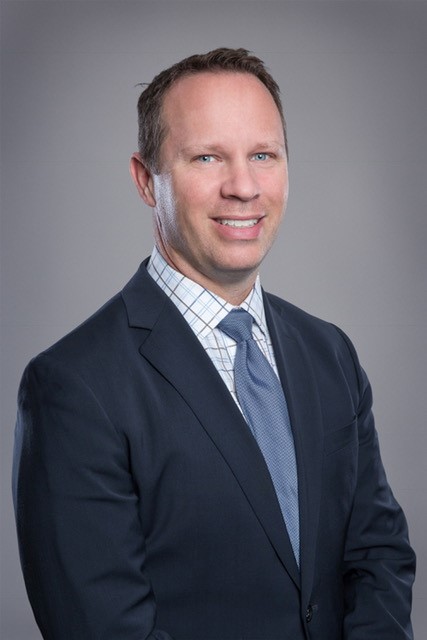 |
Brandon Ayres, MD attended
Eastern Nazarene College for undergraduate education and then went
on to receive his Doctor of Medicine degree from the University of
Medicine and Dentistry of New Jersey, Robert Wood Johnson Medical
School. He completed an internship through University of
Pennsylvania Health System, Presbyterian Medical Center and then
completed his Ophthalmology Residency at UMDNJ New Jersey Medical
School. Dr. Ayres then went on to complete a fellowship in Cornea
and Refractive Surgery at Wills Eye Hospital. Having worked at Ophthalmic Partners since 2007, Dr. Ayres is board-certified in ophthalmology and specializes in all forms of corneal transplantation and complex cataract surgery. He was the first physician at Wills Eye Hospital to perform a Descemets' membrane endothelial keratoplasty (DMEK). In addition to corneal transplantation, Dr. Ayres also has experience in the repair of traumatic eye injuries, implant complications and iris repair. For over ten years, Dr. Ayres has been on staff at both the Cornea Service at Wills Eye Hospital, where he is the co-director of the Fellowship Program, and at Jefferson Medical College, Thomas Jefferson University. During his first year as an Attending Physician on the Cornea Service, he became the youngest recipient of the Golden Apple Award at Wills Eye. He given lectures and instructed courses nationally and internationally, including the annual meetings of the American Academy of Ophthalmology, the American Society of Cataract and Refractive Surgeons and the American-European Congress of Ophthalmic Surgeons, among others. |
 |
Marc R. Bloomenstein, OD, FAAO is a 1990 graduate of the
University of California at Los Angeles with a degree in Biology.
He received his optometric degree from the New England College of
Optometry in 1994. After graduation Dr. Bloomenstein finished a
residency in secondary ophthalmic care at the Barnet Dulaney Eye
Center in Phoenix, Arizona. He received his fellowship from the
American Academy of Optometry in December 1998. Currently Dr. Bloomenstein is the Director of Optometric Services at the Schwartz Laser Eye Center in Scottsdale, Arizona and President of MRB Eye Consultants. Dr. Bloomenstein is on the editorial board of Primary Care of Optometry News, Review of Optometry, Optometry Times, Modern Optometry, Optometric Management and a frequent contributor to other various optometric journals. Dr. Bloomenstein served as the Chairman of the AOA Continuing Education Committee and served on the board of the Ocular Surface Society of Optometry (OSSO), as well as a founding member of the Optometric Cornea, Cataract, and Refractive Society (OCCRS). Dr. Bloomenstein has served as the President of the Arizona Optometric Association, Legislation Chair and President of the Board of the Arizona Optometric Charitable Foundation. Dr. Bloomenstein has delivered over 1500 invited lectures worldwide and serves as a consultant to numerous industry-leading pharmaceutical, biomedical and information technology companies. |
 |
Crystal Brimer, OD, FAAO is a graduate of UNC-Chapel Hill and
Southern College of Optometry, and a Fellow of the AAO. In
Wilmington, NC, she owns a private boutique practice and Dry Eye
Center, that she also uses for clinical investigations. Dr. Brimer
is devoted to the development of equipment and protocols that help
doctors differentiate the underlying causes of ocular surface
disease and ensure successful outcomes. Dr. Brimer enjoys publishing articles as well as the extensive travel, both nationally and internationally, to lecture and consult within the field. In her down time, she enjoys life on the water and being a member of the US Coast Guard Auxiliary. |
 |
Shelby Brogdon, OD, is a native Arkansan, practicing at McFarland Eye Care in Little Rock. Dr. Brogdon loves seeing patients of all ages and is passionate about leading her practice's Dry Eye Clinic. She is an active member of the Arkansas Optometric Association where she serves on several committees and is a graduate of its LEADership program.
Dr. Brogdon graduated from the University of the Incarnate Word, Rosenberg School of Optometry. She was named a Contact Lens Institute Visionary in 2024, a role which she uses to raise awareness regarding contact lens health and safety by promoting best practices tools, tips and research through CLI's The EASY Way program and See Tomorrow initiative. |
 |
Kristen Brown, OD, FAAO is a provider and Chief Operating Officer of Eyewell. She completed her clinical training at the University of California, School of Optometry in 1992. After completing two Ocular Disease Residencies and a 2-year Fellowship in Ocular Disease, Dr. Brown completed a Research Fellowship at the Boston University School of Medicine. She holds academic appointments as Associate Professor of Clinical Optometry at the New England College of Optometry and the MCPHS School of Optometry. Prior to Eyewell, Dr. Brown served as the Associate Dean of Clinical Affairs at the New England College of Optometry and was the Clinical Director at TLC Laser Centers, where she oversaw two high-volume laser refractive and cataract surgery centers and developed clinician networks between optometrists and ophthalmologists throughout New England. Dr. Brown is a member of the American Optometric Association and the Massachusetts Society of Optometrists. She is a Diplomate in the Cornea, Contact Lens and Refractive Technology Section of the American Academy of Optometry. Her clinical and research interests focus on dry eye management and diseases that affect the tear film and ocular surface. |
 |
Mile Brujic, OD, FAAO
is a 2002 graduate of the New England College of Optometry. He is a
partner of Premier Vision Group, a successful three location
optometric practice in Northwest Ohio. He practices full scope optometry with an emphasis on ocular disease management of the anterior segment, contact lenses and glaucoma. He is active at all levels of organized optometry. Dr. Brujic is on the editorial board for a number of optometric publications. He has published over 250 articles and has given over 1400 lectures, both nationally and internationally on contemporary topics in eye care. |
 |
Lorcan Butler, BSc (Hons), MCOptom
is an optometrist and dispensing optician from Bangor, County Down, Northern Ireland. He works with The Brain Tumour Charity where he is responsible for aiding practitioners in identifying and managing patients with signs and symptoms that may be associated with a brain tumour. Lorcan has spoken extensively at optical conferences throughout the UK and Ireland. He has worked with numerous optical bodies and organisations including the AOP, ABDO, Optometry Wales, Optometry Northern Ireland and the European Academy of Optometry and Optics. |
 |
Benjamin P. Casella, OD is a third-generation
optometrist who owns and operates Casella Eye Center in
Augusta, GA, which was established in 1948 by his grandfather,
Victor. After graduating from the University of Alabama at
Birmingham School of Optometry and completing his residency at
State University of New York College of Optometry, Dr. Casella
joined the family practice in 2008, continuing the tradition of
providing quality care to the local community alongside his father.
In addition to managing the family practice, Dr. Casella serves as the chief optometric editor of Optometry Times®. He is very active within the professional optometric community, holding many positions within the Georgia Optometric Association, serving on the AOA Evidence Based Optometry Committee, and having been named the Young OD of the South by SECO International in 2014. |
 |
Clark Y. Chang, OD, MSA, MSc, FAAO is both
Director of Cornea Specialty Lenses at Wills Eye Hospital - Cornea
Service and Director of Clinical Services at TLC Vision. After
finishing his residency, he further completed a fellowship in
cornea and contact lenses. He has taken part in numerous clinical
studies on corneal cross-linking and has authored extensively on
keratoconus management involving both surgical and/or contact lens
innovations.
He is an advisory board member at International Keratoconus Academy (IKA), Gas Permeable Lens Institute (GPLI), and Optometric Cornea Cataract and Refractive Society (OCCRS). In addition, Dr. Chang is also the immediate past president of New Jersey Academy of Optometry and the current vice chair of the membership committee at the American Academy of Optometry. |
 |
A. Paul Chous, MA, OD, FAAO
Dr. Paul Chous has a private practice specializing in diabetes eye care and education in Tacoma, WA and is Adjunct Professor of Optometry at Western University of Health Sciences in Pomona, CA. He completed his undergraduate education at Brown and UC Irvine, and then received his Masters and Doctorate of Optometry degrees from UC Berkeley. He is the author of Diabetic Eye Disease: Lessons From a Diabetic Eye Doctor, which was included in the “Top 12 Diabetes Books” by Diabetes Update magazine in 2004. He is editorial advisor to Review of Optometry and Optometry Times, AOA representative to the National Diabetes Education Program, Primary Investigator for the Diabetes Visual Function Supplement Study (DiVFuSS), and was named one of the 250 most influential optometrists in 2017. Dr. Chous has had type 1 diabetes since 1968. |
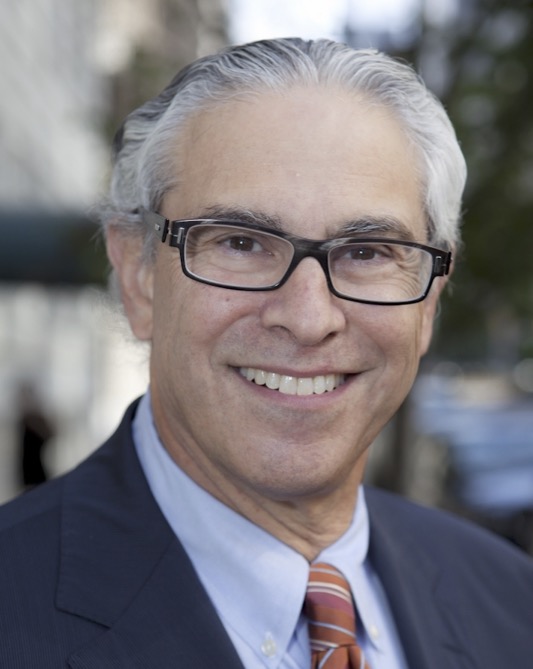 |
Jeffrey Cooper, OD, MS received his OD from Pennsylvania College of Optometry in 1971 and an M.S. in Physiological Optics from State University of New York in 1978. He completed a residency in Binocular Vision and Visual Perception in 1971 and subsequently was appointed the co-chairman of the vision therapy department. He taught at the SUNY College of Optometry from 1971 to 2015, where he obtained the rank of Clinical Professor. He taught strabismus and amblyopia diagnosis in both the professional program and the residency program; in addition, he taught in the primary care department, vision therapy department and ocular disease departments. He retired as Professor Emeritus. Currently, he is the principal owner of two practices in Manhattan and Brooklyn NY. These practices were the first in NY to partner with an Ophthalmologist, and currently have strong Ophthalmological relationships. He was the principal investigator at SUNY College of Optometry for the NIH/NEI sponsored CITT (Convergence Insufficiency Clinical Trial). He has authored over 60 peer reviewed papers dealing with anomalies of binocular vision, stereopsis, myopia, myopia treatment and glaucoma. He is a leading authority on binocular vision disorders and myopia management. He lectures in the greater NY basic science program for Ophthalmology each year at Columbia University. He has lectured in multiple cities around the world from Switzerland, India, to China. He was one of the first optometrists to incorporate atropine into his practice to slow the progression of myopia. He is the inventor of both Computer Orthoptics and the HTS programs which were used in the CITT clinical trials. His last invention is the VTS4 Hololens edition. This device allows for the accurate measurement and treatment of binocular anomalies. He is on the advisory boards of VTI, Alcon, Treehouse, Computer Orthoptics, and Magic Leap. |
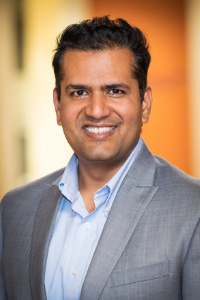 |
Pinakin Davey, OD, PhD, FAAO is a tenured full
Professor at Western University of Health Sciences, College of
Optometry. He holds Doctor of Optometry (OD) degree from Southern
College of Optometry and a Ph.D. from Anglia Ruskin University in
Cambridge, England. His post-doctoral research fellowship at
University of Louisville for three years was focused on improving
imaging techniques in glaucoma. His research is focused on retinal physiology and glaucoma particularly improving visual function in disease states. He has authored over 75 international publications and has given over 300 conference and invited presentations both nationally and internationally. His research work is funded in past and present by the National Institute of Health and industry sponsored FDA trials. |
 |
Janelle Davison, OD, is an award-winning optometrist, with 18 years of clinical experience. She is the owner and CEO of Brilliant Eyes Vision Center and the owner and Clinical Director of Visionary Dry Eye Institute, referral, and co-management center in Georgia. She is also the Chief Visionary Officer at Paradeyem Software, a web-based retail optical solution, and the cofounder of S.C.O.R.E., Inc., a non-profit organization that works to provide young women to the field of optometry. Dr. Davison is a consultant for Tarsus, Alcon, Sight Sciences and Viatris. When she is not saving sight, she enjoys spending time with her husband of 18 years and 2 children. |
 |
Murray Fingeret, OD, FAAO is Chief of the
Optometry Section, Brooklyn/St. Albans Campus, Department of
Veterans Administration New York Harbor Health Care System. Dr. Fingeret is a Clinical Professor at the State University of New York, College of Optometry and a fellow of the American Academy of Optometry. Dr. Fingeret was induced into the National Optometry Hall of Fame in 2019 and sits on the Board of Directors of the Glaucoma Foundation. He is a member of the American Glaucoma Society, the American Optometric Association, and the National Academies of Practice. Dr. Fingeret is a founding member and past-president of the Optometric Glaucoma Society and currently the president of the Optometric Glaucoma Foundation. He is the recipient of the 2013 Vincent Ellerbrock Clinician Educator Award from the American Academy of Optometry, 2008 Distinguished Service Award Optometric Glaucoma Society, 2005 Carel C. Koch Memorial Medal from the American Academy of Optometry, 1999 AMSUS Federal Service Optometrist of the Year award and 1996 Otsuka Glaucoma Educators Award from the American Academy of Optometry. Dr. Fingeret sits on the annual meeting program committee, Glaucoma Section, Association in Vision and Ophthalmology (ARVO), the editorial boards for the Journal of Glaucoma, International Glaucoma Review, Glaucoma Today, Primary Care Optometry News, Optometry Times and Review of Optometry and has authored numerous articles and co-authored the texts "Atlas of Primary Eyecare Procedures" and "Primary Care of the Glaucomas". |
 |
Mark Friedberg, MD graduated with top honors from
Brown University Undergraduate and was selected to the medical
honor society at the University of Pennsylvania School of Medicine.
Dr. Friedberg was also chosen to be one of 12 residents at the
renowned Wills Eye Hospital where he did his training. He was then selected to be the coveted, sole retinal trainee for the Washington National Eye Center located at the Washington Hospital Center. He is the co-founding editor and original lead author of the best selling book in ophthalmology, The Wills Eye Manual: Office and Emergency Room Diagnosis and Treatment of Eye Disease. Dr. Friedberg has also published numerous articles on eye surgery, has given dozens of lectures to societies of eye doctors, and has been a reviewer for eye journals in the past. He has served as a consultant to over 100 eye doctors and has performed thousands of eye operations. |
 |
Susan Gromacki, MS, OD, FAAO, FSLS is an internationally-recognized clinician, lecturer, and author in optometry. In practice for 31 years, she graduated with honors from the University of Notre Dame and The Ohio State University College of Optometry and completed a residency in hospital-based optometry with the U.S. Department of Veterans Affairs. She has presented over 800 professional lectures and publications and has served as Contributing Editor of Contact Lens Spectrum, Review of Cornea and Contact Lenses, Contemporary Optometry, and CL Today. She serves on the National Board of Examiners in Optometry, composing and overseeing the written examinations that ensure the qualifications of new US optometrists to enter practice. She is one of only 24 doctors worldwide to earn both a Fellowship in the Scleral Lens Education Society and the prestigious Diplomate in Cornea, Contact Lenses and Refractive Technologies of the American Academy of Optometry. She has presented on behalf of the profession of optometry to the US FDA and FTC, and in countries around the world. Formerly a faculty member of the New England College of Optometry and the University of Michigan Medical School, Department of Ophthalmology, she has received almost 50 professional awards for excellence, including the “Top Doctor of 2024” Award from the National Keratoconus Foundation, the Contact Lens Institute (CLI) Culture Award (2023), the 2022 Albert Nelson Marquis Lifetime Achievement Award, the World’s Top Optometrists (2020) and one of the Most Notable Alumni in the 100-year history of The Ohio State University College of Optometry. She currently practices at First Sight Vision Care in Fulton, MD. |
 |
Mitchel J. Ibach, OD, FAAO
is a residency trained optometrist at Vance Thompson Vision in Sioux Falls, SD. Dr. Ibach attended the Pacific University College of Optometry where he graduated summa cum laude. Mitch completed his residency training at Minnesota Eye Consultants with a concentration on cornea, refractive surgery, external disease and glaucoma. In September of 2014, he joined Vance Thompson Vision to focus on advanced anterior segment surgery care and pathology. Mitch is a fellow of the American Academy of Optometry, an Intrepid Eye Society member, a member with the American Optometric Association, Optometric Glaucoma Society (OGS), and the South Dakota Optometric Society. Dr. Ibach is the residency co-coordinator at Vance Thompson Vision, and is also an adjunct clinical faculty for the Illinois College of Optometry and the Pikesville College of Optometry |
 |
Viola Kanevsky, OD
is a pediatric optometrist specializing in custom contact lenses,
who has practiced on the Upper West Side of Manhattan for almost 30
years.
An émigré from the former Soviet Union, Dr. Kanevsky lived in Netanya, Brussels, and Miami, until her family settled in New York City in 1979. Many years later, having earned a BS from Pace University and a Doctorate from SUNY State College of Optometry, she works and lives with her husband, daughter, and son in the neighborhood that she loves best. She is the immediate past President of the New York State Optometric Association and has served on its board in various capacities for several years; she has served as director of the Optometric Society of the City of New York. She is the president of the NY chapter of Volunteer Optometric Services to Humanity (VOSH) and has joined VOSH on medical missions to orphanages in Mexico, Peru and Guatemala. In 2022, Dr. Kanevsky ranked #1 on Newsweek’s list of America's Best Eye Doctors. |
 |
Oliver C. Kuhn-Wilken, OD practices as a staff optometrist at Pacific Cataract and Laser Institute in Tualatin, Oregon, primarily doing pre- and post-operative care for cataract and refractive surgery. He received his doctor of optometry degree from Pacific University, and completed a residency in geriatric optometry, low vision, and ocular disease at the American Lake VA Medical Center in Tacoma, Washington. Away from work, Oliver enjoys trail running, rowing, reading, hiking, and having adventures with his wife and two kids. |
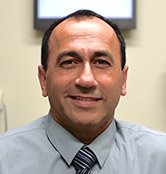 |
Graham Lakkis, BScOptom, GradCertOcTher, FACO
owns a private practice in East Victoria, Australia, with a clinical focus on ocular disease
management and glaucoma treatment. Graham also holds positions as a Senior Fellow at the University of Melbourne Department of Optometry and Vision Science, and Lead Optometrist at the University of Melbourne Glaucoma Clinic. He is a member of the Optometry Board of Australia's Scheduled Medicines Advisory Committee, Optometry Australia's Glaucoma Clinical Practice Guidelines and the Glaucoma Communities of Practice. Graham has lectured at both local and international conferences on the topics of glaucoma, ocular disease and advanced clinical instrumentation. |
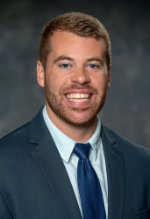 |
Cory J. Lappin, OD, FAAO is a native of Northeast
Ohio and received his Bachelor of Science degree from Miami
University, graduating Phi Beta Kappa with Honors with Distinction. He earned his Doctor of Optometry degree from The Ohio State University College of Optometry, where he concurrently completed his Master of Science degree in Vision Science. At the college he served as Class President and was a member of Beta Sigma Kappa Honor Society. Following graduation, Dr. Lappin continued his training by completing a residency in Ocular Disease at the renowned Cincinnati Eye Institute in Cincinnati, Ohio. Dr. Lappin has been recognized for his clinical performance, receiving the American Academy of Optometry Foundation Practice Excellence Award. He has also been actively engaged in research, being selected to take part in the NIH/NEI T35 research training program and receiving the Vincent J. Ellerbrock Memorial Award in recognition of accomplishments in vision science research. Dr. Lappin practices at Phoenix Eye Care and the Dry Eye Center of Arizona in Phoenix, Arizona, where he treats a wide variety of ocular diseases, with a particular interest in dry eye and ocular surface disease. Additionally, he has authored numerous articles and lectures on topics related to ocular surface disease. He is a Fellow of the American Academy of Optometry, a member of the American Optometric Association, and a member of the Board of Directors for the Arizona Optometric Association. He also volunteers with the Special Olympics Opening Eyes program. In his free time, Dr. Lappin enjoys weight lifting, trail running, and exploring the world through hiking and new culinary experiences. |
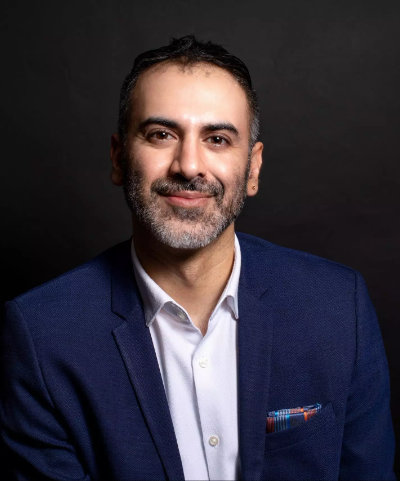 |
Anupam Laul, OD, FAAO, DIPL ABO
has been clinical faculty at SUNY Optometry since 2016. Prior to SUNY, he served as clinical faculty at Johns Hopkins, School of Medicine and the Ohio State University, College of Optometry where he was the Chief of the Ocular Disease Service. He graduated from the Michigan College of Optometry, followed by a residency in Ocular Disease at the Ophthalmic Consultants of Boston/New England College of Optometry. He is an attending in the Primary Eye Care Service and the Glaucoma Service and also teaches ocular disease clinical procedures labs. He is the instructor of record of the Ophthalmic Lasers and In-Office Surgical Procedures course and The Role of the Optometrist in Surgical Care elective. He is a member of the American Academy of Optometry, the American Optometric Association, the Optometric Glaucoma Society and is board certified by the American Board of Optometry. Dr. Laul is also the Chair of the Environmental Safety and Infection Control Committee and runs the Glaucoma Micro-Credential Program at the College. |
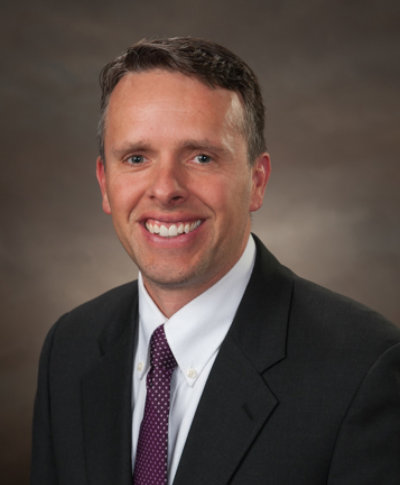 |
Austin R. Lifferth OD, FAAO
graduated from Indiana University School of Optometry in 2003 and completed a post-graduate residency in ocular disease at the Huntington, West Virginia Veterans Affairs Medical Center 2003-2004. Since that time, he has practiced in an ophthalmology co-management center for several years at Bennett & Bloom Eye Centers, a hospital-based setting at The Villages, Florida Veterans Affairs Outpatient Clinic, and is now back home again in Indiana as a consultative optometrist with an emphasis in glaucoma management at Center for Sight in Carmel, Indiana. Dr. Lifferth is a fellow of the American Academy of Optometry, a Glaucoma Diplomate of the American Academy of Optometry, Chair of the Glaucoma Section of the American Academy of Optometry, and is a member of the Optometric Glaucoma Society. |
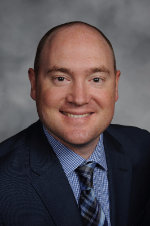 |
Nate Lighthizer, OD, FAAO is a graduate of Pacific
University College of Optometry. Upon graduation, he completed a
residency in Family Practice Optometry with an emphasis in Ocular
Disease through Northeastern State University Oklahoma College of
Optometry (NSUOCO). Dr. Lighthizer has since joined the faculty at the Oklahoma College of Optometry and serves as the Chief of Specialty Care Clinics and the Chief of Electrodiagnostics Clinic. In 2014, he founded and now heads the Dry Eye Clinic at the College of Optometry. Also in 2014, he was named the Director of Continuing Education as well as the Assistant Dean for Clinical Care Services at the Oklahoma College of Optometry. Starting in 2020, he was named the Associate Dean of the NSU Oklahoma College of Optometry. He is a founding member, and currently serves as President, of the Intrepid Eye Society which is a group of emerging thought leaders in optometry. He was named a member of PCON 250 – A list of the top 250 optometrists in the country who practice progressively, provide innovative patient care, conduct optometric research or excel in academia and share what they have learned with other optometrists to advance the profession. Dr. Lighthizer lectures nationally and internationally on numerous topics, most notably advanced ophthalmic procedures, electrodiagnostics, and ocular disease. |
 |
Sarah MacIver BSc, OD, FAAO is an optometrist and associate clinical professor at the University of Waterloo School of Optometry and Vision Science. At the University of Waterloo, she is director of continuing professional development and residency supervisor for the ocular disease and glaucoma residency program. She has a special interest in the treatment and management of chronic ocular disease, specifically glaucoma, retinal imaging and dry eye for which she has been invited to speak at various continuing education across North America. Areas of scholarship include glaucoma, dry eye disease, retinal imaging, inter-professional collaboration with primary healthcare and optometric education. She is a member of the Optometric Glaucoma Society and program chair for the American Academy of Optometry's Glaucoma section. |
 |
Richard J. Madonna, OD, FAAO is Professor and
Chair of the Department of Clinical Education and Director of the
Office of Continuing Professional Education at the SUNY College of
Optometry. Clinically, his practice at the College's University Eye
Center is limited to glaucoma. He lectures nationally and internationally on glaucoma and ophthalmic imaging. Among many professional activities, he currently serves as Vice President of the Optometric Glaucoma Society. He has received a number of awards, most recently the American Academy of Optometry's 2017 Vincent Ellerbrock Clinician-Educator Award. Dr. Madonna was formerly Director of the Optometric Residency Program at the VA Hudson Valley Health Care System and Chief of the Optometry Section at the VA Medical Center in Castle Point, New York. |
 |
Carolyn Majcher, OD, FAAO is a Doctor of Optometry and a Fellow of the American Academy of Optometry and Optometric Retina Society. She received her Doctorate of Optometry from the Pennsylvania College of Optometry at Salus University and completed an ocular disease residency at the Eye Institute of the Pennsylvania College of Optometry. Following completion of her residency, Dr. Majcher served as Chief of the Retinal Disease Clinic and an Assistant Professor at the University of the Incarnate Word Rosenberg School of Optometry for 8 years. In 2019 she joined the Northeastern State University Oklahoma College of Optometry as an Associate Professor and the Director of Residency Programs. Dr. Majcher's research interests include retinal disease and OCT angiography. |

|
Vittorio Mena, OD, MS specializes in corneal and contact lens management, serves as the sports vision director at the Optical Academy in New Jersey. He is the Co-Clinical Director of Special Olympics Lions Club International Opening Eyes Program, servicing athletes and coaches yearly. Dr. Mena was awarded the “Young OD of the Year 2019” by the New Jersey Society of Optometric Physicians (NJSOP) and now serves on the NJSOP board of directors. |
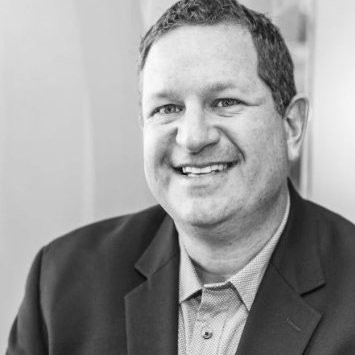
|
Andrew S. Morgenstern, OD, FAAO, FNAP Dr. Morgenstern is a graduate of Boston University (B.S.) and Nova Southeastern University College of Optometry (O.D.). He completed his optometric training at the Bascom Palmer Eye Institute in Miami, Florida. Dr. Morgenstern is a contract optometrist for the United States Defense Health Agency - Vision Center of Excellence researching acute eye injury, blast eye injury and vision dysfunction associated with Traumatic Brain Injury. He is also a volunteer clinician at the Walter Reed National Military Medical Center in Bethesda Maryland. Dr. Morgenstern serves as the Director of the American Optometric Association (AOA) Clinical Resources Group charged with developing the AOA’s Evidence Based Clinical Practice Guidelines. He currently holds the faculty rank of Assistant Professor in the Department of Surgery at the Department of Defense Uniformed Services University School of Medicine. Dr. Morgenstern is a member of the Board of Trustees at the New England College of Optometry and is President and co-founder of the International Keratoconus Academy of Eye Care Professionals Prior to his current roles, Dr. Morgenstern was a Clinical Director and Education Director for TLC Laser Eye Centers and Principal Investigator for CXL-USA/CXL-O Corneal Cross-Linking clinical trials/studies. He has a special interest in surgical and non-surgical solutions to refractive error as well as corneal ectatic disease. |
 |
Thuy-Lan Nguyen, OD, FAAO received her Bachelors of Science Degree from James Madison University in 1997. She graduated from Nova Southeastern University College of Optometry in 2002 with a Doctor of Optometry Degree. She completed a Residency in Primary Care with Emphasis in Cornea and Contact Lenses at NSU in 2003. Dr. Nguyen is a Fellow of the American Academy of Optometry and a Fellow of the Scleral Lens Society. In August 2015, Dr. Nguyen joined the Nova Southeastern University Faculty on a full time basis. She is Chief of the Cornea and Contact Lens Service and currently holds the rank of Assistant Professor. She teaches in the contact lens clinic and practice management course. Dr. Nguyen volunteers with Vision Service Plan’s mobile eye clinics and serves as VSP’s state professional representative (SPR) for South Florida. Dr. Nguyen is a member of the American Optometric Association, Florida Optometric Association, Broward County Optometric Association, American Academy of Optometry and the Scleral Lens Society. |
 |
Ada Noh, OD is a graduate of the University of Pittsburgh and Pennsylvania College of Optometry. She is an active member of the American Optometric Association, Arkansas Optometric Society, AOA Leadership institute, VC Woman Achieve, and Arkansas Women Executives. She practiced in primary care optometry for 8 years before opening a specialty dry eye clinic. She now exclusively treats dry eye disease in Little Rock, Arkansas. |
 |
John Nolan, PhD
is the Principal Investigator of the Macular Pigment Research Group
(MPRG) in the Nutrition Research Centre Ireland (www.nrci.ie) in
Waterford Institute of Technology, Ireland. His research group
studies the role of eye nutrition for vision and prevention of
blindness, and current studies are investigating the link between
nutrition and brain health and function. Dr. Nolan has secured over €5 million in research funding to date to support these studies. He has presented at over 100 international scientific conferences and has published 89 peer-reviewed scientific papers, which have been cited 3,317 times. His H-index is 37. He is co-editor of Carotenoids and Retinal Disease published by Taylor and Francis in 2013 & is a member of the Ocular Nutrition Society. He is currently serving his third term as Chair of the International Brain and Ocular Nutrition (BON) Conference, and is an editor of the Journal of Alzheimer’s Disease. |
 |
Carlo J. Pelino, OD, FAAO is a 1994 graduate of
the Pennsylvania College of Optometry. In 1995 Dr. Pelino completed
a PCO ocular disease residency at the John F. Kennedy Memorial
Hospital in Philadelphia, where he concentrated in retina and
neuro-ophthalmic disease. Dr. Pelino is currently a full time
Assistant Professor at the Pennsylvania College of Optometry and is
director of the optometric retina service at The Eye Institute. He recently completed a one year retinal fellowship emphasizing medical and surgical treatments under the direction of vitreo-retinal surgeons at Crozier-Chester and Riddle Memorial Hospitals in suburban Philadelphia. Dr. Pelino is a fellow in the American Academy of Optometry. He regularly lectures in domestic and international programs. |
 |
Tamara Petrosyan, OD is an associate clinical
professor at SUNY College of Optometry in the Primary Care, Ocular
Disease, Pediatrics, and Vision Therapy departments. Dr. Petrosyan lectures internationally and has published articles and book chapters on various topics. Dr. Petrosyan helped implement free pediatric exams for over 30,000 children through the Armenian Eyecare Project, developed over a dozen vision therapy workbooks, and helped start and previously worked with Anteo Health where she developed all of the vision therapy content. She is the InfantSEE liaison for New Jersey, head of the clinical care committees for pediatrics and vision therapy, and previously on the board of directors for the New Jersey Society of Optometric Physicians (NJSOP). Dr. Petrosyan has received the Young Optometrist of the Year and Optometrist of the Year from NJSOP and the Young Optometrist of the Year award from the AOA. |
 |
Joseph Pizzimenti, OD, FAAO is a full-time faculty
member at the University of the Incarnate Word Rosenberg School of
Optometry (UIWRSO). He received his Doctor of Optometry from the
Illinois College of Optometry, and completed a residency in Low
Vision and Ocular Disease at the University of Houston. Dr.
Pizzimenti is a Fellow of both the American Academy of Optometry
(AAO) and the Optometric Retina Society (ORS), serving as ORS
President from 2012-2014.
Dr. Pizzimenti’s areas of research interest include diabetes, age-related macular degeneration, vitreomacular adhesion, and low vision. His scientific articles have appeared in a host of peerreviewed journals. Dr. Pizzimenti was awarded a Fellowship by the World Council of Optometry in 2006, resulting in an appointment to teach and evaluate optometric education programs in Central Europe. He is involved in the both the didactic and clinical education at UIWRSO and the UIW Eye Institute. |
 |
Jessilin Quint OD, MBA, MS, FAAO is a Texas native and graduated from Baylor University with a Bachelor of Arts (BA) degree in Biology. She completed Master in Business Administration (MBA) and Master of Science (MS) in Biology degrees at West Texas A&M University. Dr. Quint received a Doctorate of Optometry degree (OD) from Indiana University. After graduation, she completed a post-doctoral Residency in Ocular Disease with an emphasis on ocular emergency and trauma at the Illinois Eye Institute in Chicago, Illinois. Dr. Quint has been an active volunteer, presenter, and author in industry publications. She is a Fellow of the American Academy of Optometry and a Board Certified Diplomate of the American Board of Optometry. Dr. Quint co-owns Smart Eye Care and Smart Eye & Med Spa in Maine. She serves as President of the Maine Optometric Association Board of Directors and is a member of the Intrepid Eye Society. |
 |
Mohammad Rafieetary, OD, FAAO is a consultative optometric physician who has been in practice at the Charles Retina Institute (CRI) since 1996. Dr. Rafieetary is a graduate of Boston University and received his Doctor of Optometry from the University of Missouri-St. Louis. He completed a residency in Primary Care Optometry and Ocular Disease at the Southern College of Optometry (SCO) and the Memphis Health Center. Upon completion of his residency in 1989, Dr. Rafieetary joined SCO's faculty and served as an Associate Professor and the Chief of Advanced Ocular Disease Service and at the Southern College of Optometry until he joined CRI. Dr. Rafieetary has received several awards including the SCO Faculty of the Year, American Diabetic Association's National Achievement of Distinction Award, and the Tennessee Associations of Optometric Physician's Optometrist of the Year. Dr. Rafieetary has served on the board of several professional organizations such as the Church Health Center and the American Diabetes Association. Dr. Rafieetary is a Fellow of the American Academy of Optometry and Optometric Retina Society. He is board certified by the American Board Optometry as well as the American Board of Certification in Medical Optometry. Dr. Rafieetary is licensed to practice Optometry in the states of Tennessee, Mississippi, Arkansas, Kentucky, and Texas. Dr. Rafieetary is published in numerous professional publications and lectures extensively on the subject of diseases of the eye with emphasis on conditions of the retina and vitreous. |
 |
Salar Rafieetary, MD earned a Bachelor of Science degree in Neuroscience from Rhodes College, where he graduated with Phi Beta Kappa honors. Dr. Rafieetary received his Doctor of Medicine degree from the University of Tennessee Health Science Center (UTHSC) in 2017. He was inducted into the Alpha Omega Alpha (AOA) honor society; he was also inducted into the Gold Humanism Honor Society (GHHS), which recognizes and supports the values of humanism and professionalism in medicine. He served as president of his medical school class for four years. Salar was awarded the “Robert L. Summitt M.D. Distinguished Student Achievement Award”. Dr. Rafieetary completed his residency in Ophthalmology at the UTHSC Hamilton Eye Institute in 2021, and his retina fellowship at the Charles Retina Institute in 2023. During the two year fellowship, he participated in over 1000 surgical cases (vitrectomies and/or scleral buckles). He then joined the Charles Retina Institute as a Vitreoretinal surgeon. He is an affiliate faculty member at UTHSC Hamilton Eye Institute and is involved in resident teaching. Dr. Rafieetary has been a part of the eye care team for the Memphis Grizzlies since the 2021 season. |
 |
Susan Resnick, OD, FAAO, FSLS is the president and
managing partner of Drs. Farkas, Kassalow, Resnick and Associates,
a contact lens and anterior segment specialty practice with
locations in New York City and Long Island. Having received her Doctor of Optometry from The State University College of Optometry in New York, Dr. Resnick has devoted her clinical career of over thirty years to specialty contact lens fitting, ocular surface wellness, and refractive surgery co-management. Dr. Resnick, a diplomate of the Cornea, Contact Lens and Refractive Surgery Section of the American Academy of Optometry and a Fellow of the Scleral Lens Education Society, is a frequent speaker and author on the topics of specialty lenses and practice management. She has participated in numerous clinical trials for the contact lens and pharmaceutical industry. She is devoted to mentoring aspiring and newly minted optometrists. |
 |
Brianna Rhue, OD, FAAO, FSLS earned her undergraduate degree from the University of Arizona before earning her Doctorate of Optometry at Nova Southeastern University. She completed her residency at the Bascom Palmer Eye Institute in Miami and is a partner at West Broward Eyecare in South Florida. Dr. Rhue is passionate about health care technology, myopia management, specialty contact lens fits and practice management. She enjoys sharing her love for technology and myopia management through speaking engagements to help optometrists understand business, technology and new areas of care to help all parties involved.
Dr. Rhue is the co-founder of Dr. Contact Lens and TechifEYE. Outside the office, she enjoys spending time with her husband and two sons, playing tennis, standing on her head in yoga and traveling. |
 |
Julie Rodman, OD, MSc, FAAO is the Chief of the
Broward Eye Care Institute in Fort Lauderdale, FL. Her research
interests include Optical Coherence Tomography/Angiography and
Vitreoretinal Disease. Dr. Rodman has authored over thirty
publications with an emphasis on retinal disease. She recently
published “Optical Coherence Tomography Atlas: A Case Study
Approach”, the first reference book on this topic written by an
optometrist. Dr. Rodman is a member of the American Optometric
Association, American Academy of Optometry, Florida Optometric
Association, Optometric Retina Society and Association for Research
in Vision and Ophthalmology. Dr. Rodman is a member of the Optovue
Advisory Board where she serves as a lecturer and consultant. She
holds her Oral Pharmaceuticals Certification and is Laser/Surgical
Certified as well. Dr. Rodman has been the recipient of numerous teaching awards, including the Golden Apple Award for Excellence in Clinical Precepting, and Preceptor of the Year. She was recognized as a Primary Care Optometry News “Top 300” Optometrists recognizing excellence in innovation and furthering of the profession. FYI: In her free time, Dr. Rodman loves spending time with her husband and two daughters….just doing anything with them!!!! |
 |
Steve Silberberg, OD is the founder of a group practice, An Eye to the Future in Matawan, NJ, and is the Program Coordinator of CEwire.
Dr Silberberg is a frequently published author and consultant for industry. He has served as VP of the Monmouth-Ocean Counties Society of Optometric Physicians, as a member-director for IDOC alliance, an was one of the original trustees of the American Association of Doctors of Optometry (AADO). He currently serves as an administrator the Facebook group Facebook group Private Practice in Optometry, which has over 6,000 members. Dr Silberberg graduated as departmental valedictorian from SUNY at Stony Brook before attending MIT on full scholarship in Planetary Astrophysics. He then attended SUNY College of Optometry, graduating as class valedictorian along with winning the Beta Sigma Kappa award for vision science, the Fredrick Brock award for excellence in Vision Therapy, and the Ester Werner award for academic excellence. |
 |
Steven Sorkin, OD earned his Doctor of Optometry
degree from the State University of New York College of Optometry.
He has received multiple clinical honors and has participated in
many contact lens related studies. He lectures extensively throughout the country and internationally on contact lenses, dry eyes, ocular allergies, ocular therapeutics and corneal disease. He has a special interest in difficult to fit contact lens patients, such as those with keratoconus and post surgical cases and manages many patients with complex anterior segment conditions. Dr. Sorkin currently serves as President of the Essex County Optometric Society and is a member of the Board of Directors of the New Jersey Society of Optometric Physicians. He is also a Fellow of the Scleral Lens Education Society. He was named New Jersey Optometrist of the Year by NJSOP in 2018. |
 |
Joseph Sowka, OD, FAAO is an attending optometric
physician at Center for Sight in Sarasota, Florida, a large
medical-surgical practice where he focuses on glaucoma management
and neuro-ophthalmic disease. He is the residency education
coordinator at Center for Sight. He is also Director of Optometric
Business Development for US EYE. He was formerly Professor of Optometry at Nova Southeastern University College of Optometry for 28 years where he served as Chief of The Advanced Care Service, Director of the Glaucoma Service, and Program Coordinator and Supervisor for the Ocular Disease Residency. Dr. Sowka is a founding member of both the Optometric Glaucoma Society and Optometric Retina Society. He is also the Founder and former Chair of the Neuro-Ophthalmic Disorders in Optometry Special Interest Group for the American Academy of Optometry. Dr. Sowka is a Glaucoma Diplomate of the American Academy of Optometry. In 2021 and 2022, he was ranked #4 optometrist in the US by Newsweek magazine “America’s Best Eye Doctors” list. He is a partner and co-owner of Optometric Education Consultants |
 |
Jennifer Stewart, OD is an optometrist,
internationally recognized speaker, writer, consultant, and
entrepreneur.
She has a passion for helping optometrists and organizations with operations, sales success, practice management and sales team training through her advisory and consulting firm, OD Perspectives. She is the Professional Editor of Independent Strong, is an Adjunct Assistant Professor at the New England College of Optometry and a consultant for Coopervision, MacuHealth and Zyloware. With a deep interest in sports vision, Dr. Stewart is the Co-Founder and Chief Vision Officer for Performance 20/20, which provides services for sports and performance vision training. She is a recipient of the Theia Award for Innovation by Women in Optometry and serves on the Executive Board for the International Sports Vision Association. Dr. Stewart is passionate about sports safety, enhancing performance, and helping business owners achieve their goals. An avid Disney fan, she lives her life by the quote “if you can dream it, you can do it.” She is inspired to help others with their dreams. |
 |
Shaina Sullivan, OD is a Pacific University
College of Optometry graduate who practices in Beaverton, OR in
partnership with Dr. Charles McBride. She is the Membership Director for the Oregon Optometric Physicians Association and an active advocate for optometry across the state and nation. Dr. Sullivan enjoys bowling, camping, attending local sporting events, and spending time with her husband and son. |

|
Jacqueline Theis OD, FAAO, FNAP is a practicing optometrist, clinical researcher,
international lecturer and author. She received her doctoral and post-doctoral residency
training in Neuro-Optometry and Binocular Vision disorders from the University of
California at Berkeley School of Optometry. She is a previous Assistant Clinical Professor and the Founder and Chief of the UC Berkeley Sports Vision and Concussion Clinic and currently serves as an Assistant Professor for the Uniformed Services University, School of Medicine, Department of Physical Medicine and Rehabilitation. She has extensive clinical experience in post-traumatic brain injury and neurologic visual dysfunctions including neuropathic eye pain, neurologic dry eye, cranial nerve palsies, oculomotor dysfunction, photophobia, visual processing, and visuo-vestibular symptoms as well as neurologic dry eye. |
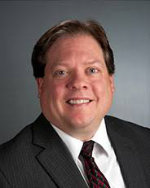 |
William Tullo, OD, FAAO is the Vice President of
Clinical Services for Vision Group Holdings, TLC Laser Eye Centers
and Laser Vision Institute. He has served as Assistant Clinical
Professor specializing in cornea and contact lenses and he has
maintained a private practice in his hometown Princeton, New
Jersey. Dr. Tullo lectures extensively internationally on
refractive surgery, cornea diseases and eye implications of child
abuse. Dr. Tullo is a Diplomate Cornea, Contact Lens and Refractive Surgery for the American Academy of Optometry and a member of the American Optometric Association. He is an executive board member of the International Keratoconus Academy of Eye Care Professionals. |
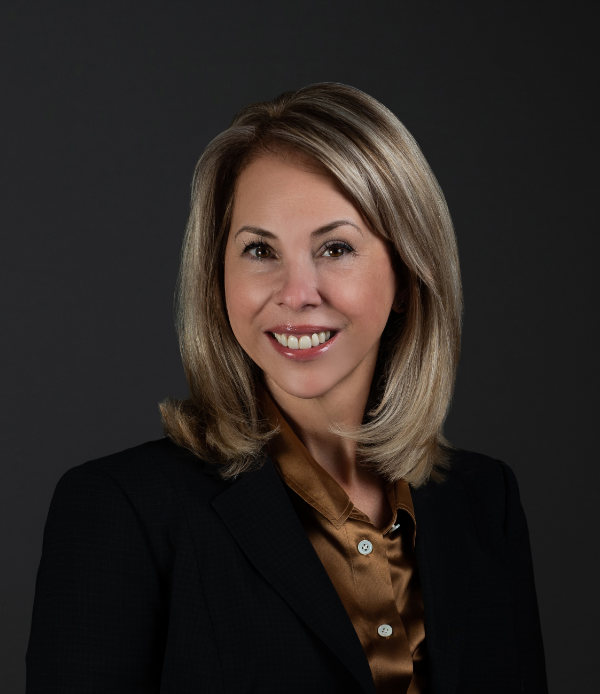 |
Melissa Vitek, OD, FAAO, PNAP, is a graduate of The Pennsylvania College of Optometry (PCO). She is an Associate Professor at PCO, Salus University, and the Dean of Global, Interprofessional, and Specialized Programming for the University. Dr. Vitek served as the Interim Provost and Vice President of Academic Affairs at Salus from May 2018 to February 2019. She chaired the governance, leadership, and administrative standard working group for Salus' most recent MSCHE accreditation self-study. Dr. Vitek is also the director of Salus' MSc in Clinical Optometry degree program and is the course coordinator and instructor for the Interprofessional Evidence-Based Practice course at Salus University. She is a member of Salus' Interprofessional Education Advisory Council, Salus' Assessment Committee, and Salus' Deans Council. Dr. Vitek is co-lead in the Interprofessional Education and Online Program Management Work Group for the Salus/Drexel Merger Integration Council. She also serves on several national committees focused on international and interprofessional programming. Dr. Vitek is enrolled in an Executive Doctorate in higher education management (Ed.D) program at the University of Pennsylvania's Graduate School of Education with an anticipated graduation date of May 2025. |
 |
Richard S. Witlin, MD, FACS, of the Witlin Center
for Advanced Eye Care, serving East Brunswick, Toms River, and
Morristown, New Jersey, is one of the pioneers in refractive
surgery in the New Jersey area since 1981 when he performed the
first radial keratotomy procedure in central New Jersey. Following the FDA approval of excimer laser surgery in 1996, Dr. Witlin took up both photorefractive keratectomy (PRK) and LASIK surgery. One of the most experienced LASIK surgeons in New Jersey, Dr. Witlin has performed 6,000 LASIK procedures and 25,000 cataract procedures since 1997. The surgical results have been outstanding, with over 98% of his patients achieving 20/40 or better visual acuities. A board-certified ophthalmic microsurgeon, Dr. Witlin received his medical degree from the Albert Einstein College of Medicine in New York City, where he graduated with honors at the top of his class and was elected to Alpha Omega Alpha, the National Medical Honor Society. He completed his internship and residency at the Albany Medical Center Hospital in Albany, New York, where he served as chief resident in ophthalmology. Dr. Witlin is an enthusiastic refractive surgical educator, sharing his expertise with numerous professional and civic groups. He has trained and supervised many eye doctors and has lectured throughout the United States and internationally. Dr. Witlin maintains faculty appointments at several prestigious teaching hospitals, including Wills Eye Hospital in Philadelphia and the New York Eye and Ear Infirmary in New York City. In 1998, Dr. Witlin established the Witlin Center for Advanced Eye Care, dedicated to the performance of refractive eye surgery and small incision, sutureless cataract microsurgery. |


